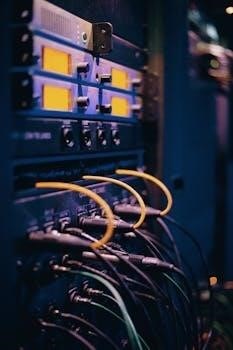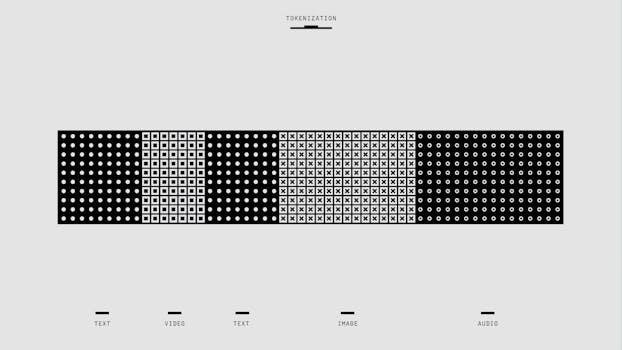
Overview of the Cardiac Conduction System
The cardiac conduction system is a network of specialized heart muscle cells. This system generates and transmits electrical impulses, which coordinate heart contractions, ensuring reliable blood circulation. This complex system is critical for regulating the heart’s rhythm and pumping efficiency. The heart’s electrical activity is initiated within this system.
Definition and Function
The cardiac conduction system is a specialized network of cardiac muscle cells distinct from contractile myocardium. These cells are responsible for generating and propagating electrical impulses throughout the heart. The primary function of the cardiac conduction system is to initiate and coordinate the rhythmic contractions of the atria and ventricles. This ensures efficient and synchronized pumping of blood. Unlike regular muscle cells, these cells do not primarily contribute to the pumping force. Instead, they act as a control mechanism for the heart’s electrical activity. The conduction system is vital for maintaining a consistent and effective cardiac cycle. This system acts like the electrical wiring of the heart. It ensures that the different chambers of the heart contract in the proper sequence, resulting in the synchronized pumping action. The correct functioning of this system is essential for proper blood flow. It guarantees that all body tissues receive the necessary oxygen and nutrients. This intricate system dictates the pace and coordination of each heartbeat.
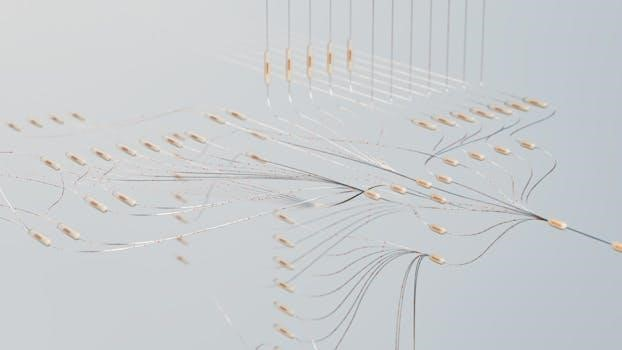
Components of the Cardiac Conduction System
The cardiac conduction system comprises several key components, each with a specific role in generating and transmitting electrical impulses. The sinoatrial (SA) node, located in the right atrium, is the heart’s natural pacemaker, initiating electrical impulses. The atrioventricular (AV) node, found in the lower right atrium, delays the impulse, allowing atrial contraction before ventricular contraction. The bundle of His, branching from the AV node, transmits impulses to the ventricles. The right and left bundle branches carry these impulses down the ventricular septum. Finally, Purkinje fibers, extending from the bundle branches, spread the impulse throughout the ventricular myocardium. This system works like a well-orchestrated electrical circuit. Each component plays a crucial part in maintaining the heart’s rhythmic contractions. These components work together to ensure that the heart beats in a coordinated and efficient manner. This sequence of specialized tissues allows the electrical signal to propagate swiftly, leading to a synchronized contraction of the heart muscle.
Sinoatrial (SA) Node
The sinoatrial (SA) node, often referred to as the heart’s natural pacemaker, is a specialized cluster of cells located in the right atrium near the entrance of the superior vena cava. It is responsible for initiating the electrical impulses that trigger each heartbeat. The SA node generates these impulses at a regular rate, typically between 60 and 100 times per minute in a healthy adult, setting the normal heart rhythm. This rate can be influenced by various factors such as physical activity, stress, and hormonal changes. The SA node’s ability to spontaneously depolarize and generate action potentials is crucial for the heart’s automaticity. The electrical impulse produced by the SA node spreads across both atria, causing them to contract. This process initiates the cardiac cycle. Without the SA node, the heart would not be able to maintain a consistent and coordinated rhythm, leading to severe cardiovascular dysfunction. The SA node is the primary regulator of heart rate. It is an essential component of the cardiac conduction system.
Atrioventricular (AV) Node
The atrioventricular (AV) node is another crucial component of the cardiac conduction system, situated in the lower part of the right atrium near the septum. It serves as a critical gatekeeper, receiving electrical impulses from the atria after they have been initiated by the SA node. The primary function of the AV node is to delay the impulse before it is transmitted to the ventricles. This delay is essential because it allows the atria to fully contract and empty their blood into the ventricles before ventricular contraction begins, optimizing the heart’s pumping efficiency. The AV node also has a protective function. It prevents excessively rapid atrial rhythms from being conducted to the ventricles, which could otherwise lead to dangerous ventricular arrhythmias. The AV node’s conductive properties are slower than those of other parts of the system. This is partly due to smaller cells and fewer gap junctions. The delay allows for proper coordination of the cardiac cycle. It is a vital part of the heart’s electrical pathway.
Bundle of His
The Bundle of His is a critical component of the cardiac conduction system, acting as a bridge between the atria and ventricles. It originates from the atrioventricular (AV) node and extends down through the fibrous tissue separating the atria and ventricles. It is the only electrical connection between the atria and ventricles. The Bundle of His is composed of specialized conducting cells that transmit electrical impulses rapidly, ensuring efficient and coordinated ventricular contraction. Its location is crucial because it allows the electrical signal to pass from the AV node to the ventricular septum. The Bundle of His then divides into two main branches, the right and left bundle branches, which further distribute the electrical impulse. This division allows for the simultaneous activation of both ventricles, enabling a strong and effective contraction. Without the Bundle of His, the electrical signal would not efficiently reach the ventricles, leading to an ineffective heartbeat. Therefore, its function is central to proper cardiac function and the efficient pumping of blood throughout the body.
Bundle Branches
The bundle branches are continuations of the Bundle of His, playing a vital role in the cardiac conduction system by distributing electrical impulses to the ventricles. These branches are critical for ensuring synchronous contraction of the left and right ventricles. The Bundle of His bifurcates into two main pathways⁚ the right bundle branch and the left bundle branch. The right bundle branch travels through the right ventricular septum towards the apex of the heart, carrying electrical signals to the right ventricle’s myocardium. The left bundle branch is larger and more complex, quickly dividing into anterior and posterior fascicles, which subsequently distribute impulses to the left ventricle. This complex branching pattern ensures that the left ventricle, the main pump of the heart, contracts effectively. The bundle branches facilitate rapid and simultaneous depolarization of ventricular muscle cells, leading to a powerful and coordinated contraction. This synchronized activity is essential for generating sufficient force to propel blood into the systemic and pulmonary circulations, thus ensuring adequate blood flow throughout the body. Dysfunction in the bundle branches can lead to conduction abnormalities and impaired cardiac function.
Purkinje Fibers
Purkinje fibers are specialized conducting fibers that form the terminal part of the cardiac conduction system, distributing electrical impulses throughout the ventricular myocardium. These fibers are crucial for ensuring rapid and coordinated ventricular contraction, which is vital for efficient blood ejection from the heart. The Purkinje fibers are essentially extensions of the bundle branches, forming a dense network within the walls of both ventricles. They are characterized by their relatively large diameter and high conduction velocity, which enables them to transmit impulses rapidly and synchronously. This rapid transmission ensures that the entire ventricular muscle mass depolarizes almost simultaneously, promoting a powerful and unified contraction. This coordinated contraction is essential for proper heart function, allowing for effective pumping of blood into the arteries. The Purkinje fibers are strategically located within the subendocardial layer of the ventricular walls, which allows for the efficient spread of electrical activation throughout the ventricular muscle. This efficient spread is critical for the consistent and effective contraction of the ventricles. The integrity of the Purkinje fiber network is paramount for maintaining normal cardiac rhythm and function.
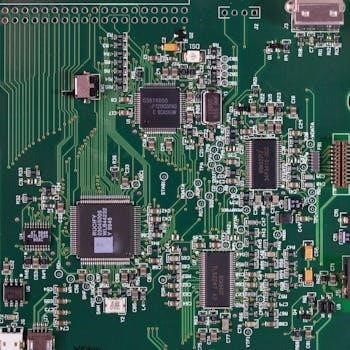
Electrical Impulse Generation and Propagation
The cardiac conduction system generates electrical impulses within the sinoatrial node. These impulses propagate through the heart via specialized pathways. This process orchestrates the synchronized contractions of the atria and ventricles. The electrical activity is essential for proper heart function.
Sequence of Electrical Conduction
The sequence of electrical conduction within the heart is a precisely coordinated process, essential for effective cardiac function. It begins at the sinoatrial (SA) node, located in the right atrium, which acts as the heart’s natural pacemaker. The SA node generates electrical impulses that then spread throughout both atria. This atrial depolarization leads to the contraction of the atria, pushing blood into the ventricles. The electrical impulse then reaches the atrioventricular (AV) node, situated between the atria and ventricles. At the AV node, there is a slight delay which allows the atria to fully empty before the ventricles contract. From the AV node, the impulse travels down the bundle of His, a specialized pathway located within the interventricular septum. The bundle of His then divides into right and left bundle branches, which course through the right and left ventricles, respectively. These branches further subdivide into a network of Purkinje fibers, that distribute the electrical impulse to the ventricular muscle cells. This rapid spread of electrical activity through the Purkinje network causes the ventricles to contract in a coordinated fashion, pumping blood out to the body and lungs. This precisely timed sequence is crucial for maintaining a normal heart rhythm and ensuring efficient circulation.
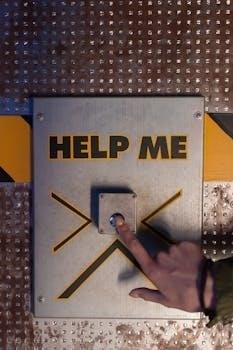
Clinical Significance
The clinical significance of the cardiac conduction system is paramount, as it directly relates to heart rhythm and function. Abnormalities in this system can lead to various cardiac conditions, emphasizing the importance of its proper functioning for overall health.
Role in Heart Rhythm
The cardiac conduction system plays an indispensable role in establishing and maintaining the heart’s rhythm. The sinoatrial (SA) node, often referred to as the heart’s natural pacemaker, initiates electrical impulses that set the pace for the entire heart. These impulses then propagate through the atria, causing them to contract and pump blood into the ventricles. The atrioventricular (AV) node acts as a gatekeeper, briefly delaying the electrical signal to allow complete atrial emptying before ventricular contraction. This coordinated sequence ensures efficient blood flow.
The bundle of His, bundle branches, and Purkinje fibers then rapidly transmit these signals to the ventricular muscle cells, causing a synchronized and powerful contraction. This intricate system ensures that the heart beats in a regular and rhythmic pattern, which is crucial for maintaining adequate blood circulation throughout the body. Any disruption in the function or timing of this electrical system can lead to irregular heart rhythms (arrhythmias), which can compromise cardiac output and overall health. Therefore, understanding the precise role of each component in the cardiac conduction system is vital for diagnosing and treating various heart conditions.
Conduction System Abnormalities
Various abnormalities can affect the cardiac conduction system, leading to a range of heart rhythm disturbances. These abnormalities can arise from issues within the SA node, AV node, bundle of His, bundle branches, or Purkinje fibers. For instance, a dysfunction of the SA node can result in bradycardia (a slow heart rate) or tachycardia (a fast heart rate), or even an irregular rhythm. Problems with the AV node can cause heart block, where electrical signals are delayed or completely blocked from reaching the ventricles, thus disrupting the coordinated pumping action.
Furthermore, abnormalities in the bundle branches can lead to bundle branch blocks, where the electrical impulse is slowed or blocked in one of the ventricles, causing asynchronous ventricular contraction. Similarly, issues with the Purkinje fibers can result in irregular ventricular rhythms. These conduction abnormalities can arise due to congenital defects, ischemic heart disease, infections, or age-related changes. Understanding these abnormalities is crucial for developing appropriate treatments, such as medications, pacemakers, or other medical interventions to restore a normal heart rhythm and improve cardiovascular health.
